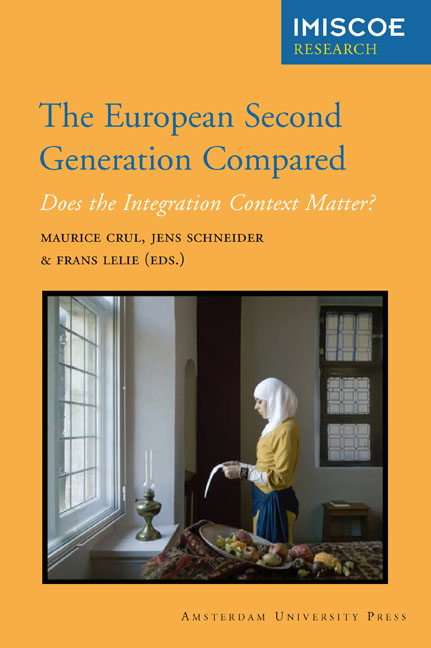Book contents
- Frontmatter
- Contents
- Acknowledgements
- 1 Introduction
- 2 Comparative Integration Context Theory: Participation and Belonging in Diverse European Cities
- 3 Research Methodology
- 4 The TIES Respondents and their Parents: Background Socio-Demographic Characteristics
- 5 School Careers Of Second-Generation Youth in Europe: Which Education Systems Provide the best Chances for Success?
- 6 Assessing the Labour Market Position and Its Determinants for the Second Generation
- 7 Union Formation and Partner Choice
- 8 Identities: Urban Belonging and Intercultural Relations
- 9 Ways of ‘being Muslim’: Religious Identities of Second-Generation Turks
- 10 Conclusions and Implications: The Integration Context Matters
- List of Contributors
- Other IMISCOE titles
3 - Research Methodology
Published online by Cambridge University Press: 09 January 2021
- Frontmatter
- Contents
- Acknowledgements
- 1 Introduction
- 2 Comparative Integration Context Theory: Participation and Belonging in Diverse European Cities
- 3 Research Methodology
- 4 The TIES Respondents and their Parents: Background Socio-Demographic Characteristics
- 5 School Careers Of Second-Generation Youth in Europe: Which Education Systems Provide the best Chances for Success?
- 6 Assessing the Labour Market Position and Its Determinants for the Second Generation
- 7 Union Formation and Partner Choice
- 8 Identities: Urban Belonging and Intercultural Relations
- 9 Ways of ‘being Muslim’: Religious Identities of Second-Generation Turks
- 10 Conclusions and Implications: The Integration Context Matters
- List of Contributors
- Other IMISCOE titles
Summary
Introduction
Mainly under ‘guest worker’ policies, Turkish, Moroccan and former Yugoslavian immigrants in the 1960s began to constitute sizeable diasporic communities in many European cities. They formed families and had children born in the country of immigration. The so-called second generation has now come of age and is well represented among adolescents and young adults in the European Union.
The TIES project's methodological objective was to obtain statistically representative information on integration-related topics from second-generation Turks, Moroccans and former Yugoslavians in fifteen cities: Amsterdam, Rotterdam (the Netherlands); Antwerp, Brussels (Belgium); Paris, Strasbourg (France); Barcelona, Madrid (Spain); Basel, Zurich (Switzerland); Linz, Vienna (Austria); Berlin, Frankfurt (Germany); and Stockholm (Sweden). Our envisioned strategy was to survey the second generation using probability sampling, as this provides a theoretical basis from which to infer objectively to the entire populations of second-generation Turks, Moroccans and former Yugoslavians in the selected cities. This also meant facing constraints similarly encountered when sampling other minority populations (cf. Groenewold & Bilsborrow 2008). These include:
– Lack of readily available sampling frames from which to sample members of minority groups, including the second generation;
– Tendency of minority groups to concentrate in particular regions and parts of cities;
– Scarcity of members of minority groups in the general population.
This chapter discusses the TIES research methodology. The following sections address the envisioned model sampling strategy, and sampling frame availability and constraints for each participating country and city. We then present summaries of country-specific sampling designs and strategies. Our conclusion entails a discussion about problems encountered in the sampling of the second generation, our adopted solutions and repercussions for the statistical representativity of the collected data.
Model sampling strategy
The IMES-NIDI project coordination team began by agreeing on a straightforward general sampling strategy to be presented to the collaborators. The individual national institutes would then adapt the model to fit local conditions in terms of available sampling frames (see section 3.3) and financial constraints. The first step was to formulate eligibility criteria. We decided to set the age range for all study groups at eighteen to 35, while group membership was to be determined by birth in the survey country to at least one parent who was born in the country of ethnic origin (Turkey, Morocco or former Yugoslavia).
- Type
- Chapter
- Information
- European Second Generation ComparedDoes the Integration Context Matter?, pp. 39 - 56Publisher: Amsterdam University PressPrint publication year: 2013
- 1
- Cited by



